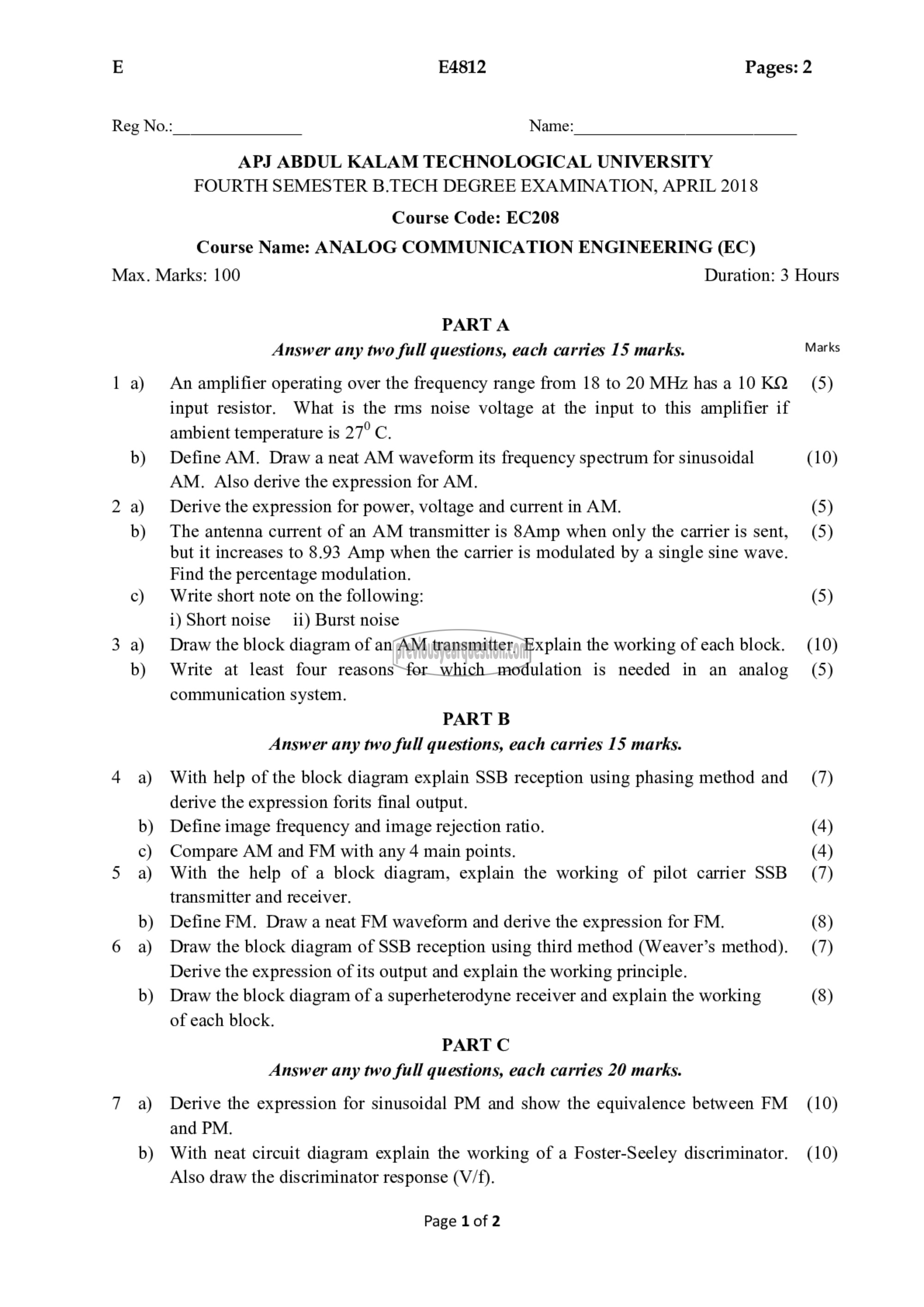APJ ABDUL KALAM TECHNOLOGICAL UNIVERSITY Previous Years Question Paper & Answer
Semester : SEMESTER 4
Subject : Analog Communication Engineering
Year : 2018
Term : APRIL
Scheme : 2015 Full Time
Course Code : EC 208
Page:1
E4812 Pages: 2
Reg No.: Name:
Max. Marks: 100
b)
APJ ABDUL KALAM TECHNOLOGICAL UNIVERSITY
FOURTH SEMESTER B.TECH DEGREE EXAMINATION, APRIL 2018
Course Code: EC208
Course Name: ANALOG COMMUNICATION ENGINEERING (EC)
PART A
Answer any two full questions, each carries 15 marks.
An amplifier operating over the frequency range from 18 to 20 MHz has a 10 KQ
input resistor. What is the rms noise voltage at the input to this amplifier if
ambient temperature is 27° C.
Define AM. Draw a neat AM waveform its frequency spectrum for sinusoidal
AM. Also derive the expression for AM.
Derive the expression for power, voltage and current in AM.
The antenna current of an AM transmitter is 8Amp when only the carrier is sent,
but it increases to 8.93 Amp when the carrier is modulated by a single sine wave.
Find the percentage modulation.
Write short note on the following:
i) Short noise 11) Burst noise
Draw the block diagram of an AM transmitter, Explain the working of each block.
Write at least four reasons for which modulation is needed in an analog
communication system.
PART B
Answer any two full questions, each carries 15 marks.
With help of the block diagram explain SSB reception using phasing method and
derive the expression forits final output.
Define image frequency and image rejection ratio.
Compare AM and FM with any 4 main points.
With the help of a block diagram, explain the working of pilot carrier SSB
transmitter and receiver.
Define FM. Draw a neat FM waveform and derive the expression for FM.
Draw the block diagram of SSB reception using third method (Weaver’s method).
Derive the expression of its output and explain the working principle.
Draw the block diagram of a superheterodyne receiver and explain the working
of each block.
PART C
Answer any two full questions, each carries 20 marks.
Derive the expression for sinusoidal PM and show the equivalence between FM
and PM.
With neat circuit diagram explain the working of a Foster-Seeley discriminator.
Also draw the discriminator response (V/f).
Page 1 of 2
Duration: 3 Hours
Marks
(5)
(10)
(5)
(5)
(5)
(10)
(5)
(7)
(4)
(4)
(7)
(8)
(7)
(8)
(10)
(10)
